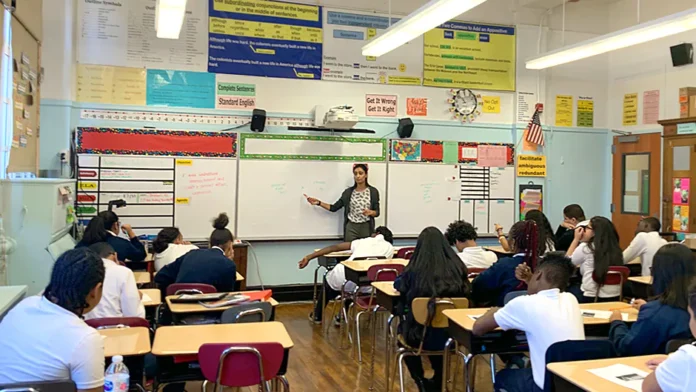Educational equity ensures that every student, regardless of their background, race, socioeconomic status, or abilities, has an equal opportunity to succeed in education. It recognizes that each student has unique needs and strives to eliminate disparities in educational outcomes. To achieve educational equity, it is necessary to implement targeted strategies that address the root causes of inequality and support marginalized students. Explore ILearnUK.com to discover the essential strategies for creating inclusive schools and promoting educational equity.
Understanding Educational Equity
Before delving into the strategies, it is essential to have a clear understanding of educational equity. Educational equity focuses on closing achievement gaps and providing resources and support to students who face barriers to educational success. It aims to remove systemic biases and create an inclusive educational system that caters to the diverse needs of all learners.
Enhancing Early Childhood Education
Early childhood education is critical in setting the foundation for a child’s academic journey. By investing in high-quality early education programs, policymakers can mitigate the effects of socioeconomic disparities and provide children with equal opportunities from the start.
Expanding access to pre-kindergarten programs, promoting early literacy initiatives, and supporting parental involvement can enhance early childhood education and foster educational equity.
Providing Equitable Funding
Equitable funding is vital for ensuring that all schools have the necessary resources to provide quality education. Disparities in funding can perpetuate educational inequities, as schools in low-income areas often lack the funds needed to provide essential resources and programs.
Implementing funding formulas considering factors like student needs and socioeconomic backgrounds can help distribute resources more equitably and reduce the funding gaps between schools.
Cultivating Inclusive School Environments
Creating inclusive school environments where all students feel valued and supported is crucial for promoting educational equity. Schools should adopt strategies that celebrate diversity, foster cultural understanding, and prevent discrimination. Take a stand for educational equity! Visit RakuRakuSchool.com now to learn how to create inclusive schools that foster a sense of belonging for all students.
Schools can create safe spaces where every student feels welcomed and respected by promoting inclusive practices, such as implementing anti-bullying programs, providing multicultural education, and offering sensitivity training to staff.
Offering Supportive Services
Many students face challenges outside of the classroom that can hinder their educational success. Schools can address these barriers by providing comprehensive supportive services, such as access to healthcare, mental health counseling, and nutrition programs, and ensure that students’ basic needs are met.
Collaborating with community organizations and agencies can further expand the range of services available to students, promoting equity by addressing the underlying factors that affect their educational outcomes.
Recruiting and Retaining High-Quality Teachers
High-quality teachers are essential for delivering effective instruction and fostering student success. However, there is often a shortage of teachers in underserved communities. Recruiting and retaining highly qualified teachers in these areas is crucial to address this issue.
Offering competitive salaries, providing professional development opportunities, and creating supportive work environments can attract and retain talented educators, ensuring students in all communities can access quality teaching.
Encouraging Parental and Community Engagement
Parental and community engagement is a powerful catalyst for educational equity. When families are actively involved in their child’s education, students tend to perform better academically. Dive into EduCity1713.com‘s comprehensive resources and learn about Parental and Community Engagement.
Schools should establish effective communication channels with parents, provide resources to support their involvement and create opportunities for community partnerships.
Schools, families, and communities can create a collaborative, supportive network that empowers students and fosters educational equity.
Emphasizing Culturally Responsive Education
Culturally responsive education recognizes and values the diverse cultural backgrounds of students. It promotes teaching practices incorporating students’ cultural experiences, histories, and perspectives into the curriculum.
By embracing culturally responsive education, schools can create a more inclusive learning environment where all students feel represented, fostering engagement and academic success.
Utilizing Technology for Equal Access
Technology can be a powerful tool in promoting educational equity by providing equal access to learning resources. Schools can bridge the digital divide by ensuring all students can access computers, internet connectivity, and digital learning platforms.
Additionally, utilizing technology to deliver personalized instruction and adaptive learning experiences can cater to students’ needs, promoting equity in educational outcomes.
Conclusion
Achieving educational equity requires a comprehensive approach that addresses the complex factors influencing students’ educational opportunities. We can take significant steps toward creating an equitable education system by implementing strategies such as enhancing early childhood education, providing equitable funding, cultivating inclusive school environments, and addressing disciplinary disparities.
Through collaborative efforts between policymakers, educators, families, and communities, we can ensure that all students have access to quality education, regardless of their background. Educational equity is a moral imperative and an investment in a more just and prosperous society.










